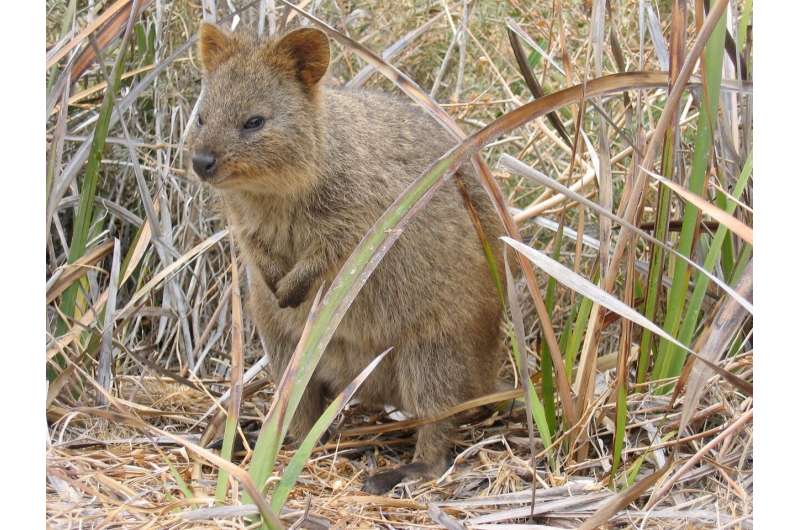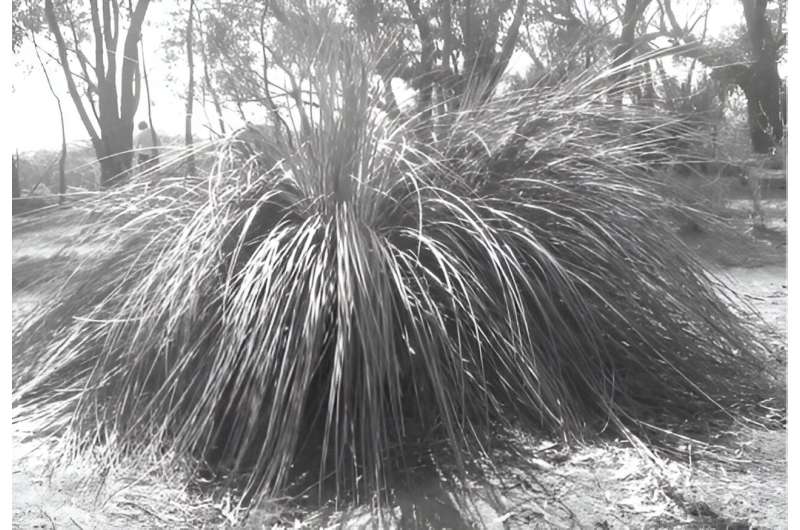AUSTRALIA
Expert says to brace for bushfire season ahead, but expect worse to come

The upcoming bushfire season in Australia may be bad, but future years pose a more significant threat, says a University of New South Wales bushfire expert.
The recent devastation caused by wildfires across Europe and Hawaii has sparked concerns about the return of catastrophic bushfires in Australia. Coupled with the forecast that the southern hemisphere is likely entering a hot and dry El Niño event, conditions could be favorable for major fires after a few years of subdued activity.
But Professor Jason Sharples, an expert in bushfires dynamics from UNSW Canberra, says while it's always hard to predict exactly what will unfold in Australia, it's unlikely to be a repeat of the 2019–2020 Black Summer bushfires.
"El Niño conditions don't necessarily mean we will have a worse bushfire season, though it does mean we're more likely to have hotter temperatures, less rainfall, and dry conditions that can lead to destructive fires," Prof. Sharples says. "Instead of being hit hard this year, we may see the impacts of El Niño accumulate and combine with climate change in the next season and the ones following."
However, Prof. Sharples says this season may still bring a chance of significant fires developing. Three years of increased rainfall from consecutive La Niña events has seen vegetation grow, especially grasses, and a relatively dry year so far may have begun to dry it out.
"In many areas, there is still some moisture content in forest fuels like trees, leaves and branches, as well the litter on the ground, but it takes a while, probably more than one season, to dry out," Prof. Sharples says. "So, while the vegetation has grown a lot, and there may be a lot of fuel lying around, it's probably not ready to burn with that intensity this year.
"However, there are still some forested areas that have already seen significant drying, and these areas could see intense bushfires."
The Black Summer bushfires also burned a lot of forest areas along south-east Australia already. While reburn fires could occur this year, Prof. Sharples says they're unlikely to be as severe, though other untouched forest areas along the coast could still burn.
Instead, grassland areas, which have also grown over the last few years of rainfall, may be more at risk this season.
"There is a higher possibility of grass fires this year, in areas like western New South Wales, though they're not typically as damaging as large forest fires," Prof. Sharples says.
"The biggest area burnt in Australia was due to a series of grassland fires that burnt 100 million hectares following a strong La Niña, so they can still be a significant hazard, particularly in rural areas."
Future bushfire season threats
While this upcoming season might not hit as hard as others in recent memory, Prof. Sharples says the risk of more severe and frequent bushfires continues to grow from human-driven climate change.
"The fact that our worst bushfire season on record didn't coincide with an El Niño suggests climate change is acting, and we should prepare for worsening bushfire conditions in the years ahead," Prof. Sharples says.
Overall, bushfire seasons are getting longer and starting earlier. Heat waves, in particular, are becoming hotter, longer, and more frequent, drying out fuels and intensifying bushfires.
"The risk of extreme bushfires is rising because of climate change, and there is a clear link between hotter temperatures and worsening bushfires," Prof. Sharples says. "They're becoming more destructive and regular, and present a unique set of hazards as they interact with the atmosphere to create violent firestorms."
Prof. Sharples says we must act now to improve fire preparedness and management strategies to mitigate the increasing threat of bushfires.
"We're not going to be able to prevent bad seasons from occurring, but we can take steps to improve fire management techniques to prevent extreme fires as much as possible," Prof. Sharples says.
"If not, we will be locked in a vicious cycle of climate change leading to larger fires and then those larger fires amplifying the effects of climate change."
Prof. Sharples also says we need more research to understand the dynamics of fires and a lot of investment and interest in different technologies to help mitigate the risk of bushfires.
"It's not the sort of problem that gets solved in a single season," Prof. Sharples says. "It will take years, possibly even decades, of research and planning to better prepare ourselves for the kinds of bushfires we had in the Black Summer season."
Provided by University of New South Wales Bigger, wilder, more destructive: How cold fronts affected the Black Summer bushfires
Quokkas demonstrate adaptive behavior in response to prescribed burns

Quokkas residing in the Northern Jarrah Forest, Western Australia have been found to be using fire exclusion zones to ensure their own safety and longevity.
A study conducted by researchers at Murdoch University's Harry Butler Institute, working with the Department of Biodiversity, Conservation and Attractions, has shed light on their adaptive behavior following periods of prescribed burns. The study is published in the International Journal of Wildland Fire.
The findings emphasize the importance of appropriately sized and located fire exclusion areas in conservation management.
Harry Butler Institute researcher Leticia Povh led the study and said understanding how animals use their space after prescribed burning is crucial for effective conservation management, particularly for threatened species like the quokka.
"The study aimed to determine how individual quokkas changed their home ranges following burns," Povh said.
"In a world of rising temperatures and decreasing rainfall across southwest WA, this study has important conservation significance in determining how we manage habitat for our mainland quokkas into the future."
Over the course of two years, the movement patterns of 20 quokkas were meticulously tracked before and after prescribed burns.
Home-range area calculations were performed for each individual, and behavioral change point analysis was conducted to detect any alterations in their space use.
"The key results revealed a remarkable shift in the behavior of six quokkas that had previously resided in areas subjected to prescribed burns," Povh said.
"These individuals moved into fire exclusion zones, actively avoiding the burn areas for an average of three months.
"After this time, these quokkas spent no more than 2% of their time in the burn areas. In contrast, quokkas inhabiting fire exclusion and control sites did not exhibit any changes in their space use.
"This study highlights the importance of appropriately sized fire exclusion zones to ensure the preservation of populations of species dependent on dense vegetation."
Quokkas, like many other fauna species, rely on dense cover for refuge from introduced predators such as the feral cat and red fox, making fire exclusion areas a crucial component of prescribed burn planning.
By providing refuge and food sources, these areas contribute to the long-term viability of quokka populations and other species with similar habitat requirements.
As prescribed burns continue to be used in land management, the findings of this study offer useful insights for conservation practitioners.
By incorporating appropriately sized and located fire exclusion areas into prescribed burn planning, land managers can assist in preserving critical habitat for vulnerable wildlife like the quokka.
More information: Leticia F. Povh et al, A conservation-significant threatened mammal uses fire exclusions and shifts ranges in the presence of prescribed burning, International Journal of Wildland Fire (2023). DOI: 10.1071/WF22196
Provided by Murdoch University
Tracking quokkas through fires
Hard yacca: Grass-trees are a life saver for many animals, but fire and disease threaten their survival

Australia's iconic grass-trees—aka yaccas—are hardy, drought-tolerant, and strikingly beautiful. Now, new research has revealed another, far more important, feature: their ability to protect wildlife from deadly weather extremes.
A study undertaken by the University of South Australia and Kangaroo Island Research Station shows that the yaccas' long, thick and dry grassy skirts help insulate animals from lethal temperatures in summer and winter, as well as keeping them dry. The research is published in Pacific Conservation Biology.
Temperatures under the grass-tree canopies at four sites in the Mt Lofty Ranges were up to 20 degrees cooler than under the direct sun in summer. In winter, conditions were significantly warmer under the grass skirts at night.
It turns out the iconic plant species—Xanthorrhoea semiplana sub species semiplana—also doubles as an effective umbrella, keeping the soil completely dry under 80% of the bigger, older yaccas during weeks of heavy rain.
Lead researcher Dr. Topa Petit says it's not surprising that many creatures seek shelter under yaccas, particularly the older species with the largest and thickest skirts.
"Several of the 29 species of Australian grass-trees are known to host native bush rats, threatened bandicoots, echidnas and pygmy-possums, among other wildlife," Dr. Petit says.
"Temperatures over 40 degrees can be lethal to some of our wildlife, but grass-trees provide extremely stable temperatures with very little variation.
"The remarkable ability of these grass-trees to protect wildlife from deadly climatic extremes—as well as providing effective hiding spots from predators—strengthens the mounting evidence that these plants are keystone species."
However, the yaccas on the mainland and Kangaroo Island are facing multiple threats which could have dramatic consequences for wildlife, Dr. Petit says.
The soil pathogen Phytophthora cinnamomi is having a devastating impact on the grass-trees, causing widespread dieback. Fuel reduction programs, summer fires and land clearing are threatening their survival even further.
"Grass-tree resilience to bushfires appears to be overestimated," Dr. Petit says.
"Moreover, even if grass-trees are not killed by fires, their very old thick skirts of dead leaves burn, leaving no shelter to animals in post-bushfire environments."
In 2022, the Federal Government added fire regimes that cause declines in biodiversity to the list of Key Threatening Processes.
"Historically, grass-trees were cleared for agriculture. They are now cleared or burnt in so-called fuel reduction programs. Extensive research has shown that this practice increases fuel loads and dries out the landscape."
Dr. Petit says yaccas scorched by fire can take decades to regain their role as effective shelters and are more susceptible to Phytophthora infestations.
"It's important that habitat management be backed by sound research and scientific monitoring rather than hysteria. We owe it to the future of our ecosystems."
More information: Sophie Petit et al, The role of grass-tree Xanthorrhoea semiplana (Asphodelaceae) canopies in temperature regulation and waterproofing for ground-dwelling wildlife, Pacific Conservation Biology (2023). DOI: 10.1071/PC23014
Provided by University of South Australia Kangaroo Island ants 'play dead' to avoid predators
No comments:
Post a Comment